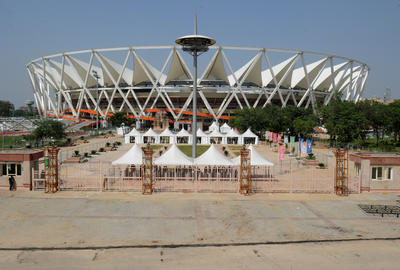Or does it have to do with financial constraints resulting from fragile global markets, risk-averse banks and high interest rates? Or are the government’s failures in policy-making, granting clearances and coordinating between its own departments also partly to blame?
Recent five-year plans have placed increased reliance on private investment and financing to achieve higher infrastructure investment. During the 2002–2007 period actual private investment, at 24 per cent of total investment, exceeded the target level by 4 percentage points. Accordingly, the target for the 11th five-year plan (2007–2012) was raised to 30 per cent and was exceeded for the first two years, when private investment amounted to about 36 per cent of the total. But starting in 2009–10 a drastic fall took place, due to which the aggregate private investment in the 11th five-year plan fell short of the target.
What is the explanation for this? Demand cannot have been a constraint, as India has obvious shortages in infrastructure. Growth rates during 2009 and 2010 were high, following a ‘V-shaped’ recovery from the global financial crisis. Even interest rates were very low: the Reserve Bank of India started raising nominal interest rates only in 2010, after cutting them steeply from late 2008. The same goes for foreign portfolio investment (FPI) inflows, which revived strongly in 2009, as India’s robust growth rates contrasted with anaemic levels elsewhere. Either way, neither demand nor financing constraints were the trigger for the slowdown.
That brings us to the next explanation: policy paralysis.
Policy paralysis has been largely blamed on the anti-corruption agitations by civil society, as well as the Comptroller and Auditor General of India’s report on the 2G spectrum allocations, the Supreme Court’s order quashing the licences, and the Commonwealth Games scam. It is argued, these events led civil servants to stop clearing files for fear of subsequent investigation.
But the fact is, all of these events happened in 2010 and thereafter — the infrastructure slowdown actually started in 2009. The slowdown really had more to do with the failure of the official apparatus to provide the various clearances required for the infrastructure proposals that came up while investments were booming. The scale of new investment proposals simply overwhelmed the government’s capacity to process them.
If 2009–10 — a year where demand and financial constraints were no issue and yet infrastructure investments slowed down — is taken as the starting point, it becomes easier to establish causality. Once a slowdown began, other negative factors, including corruption and scams, also kicked in.
As it became clear to banks that regulatory hurdles were holding up the infrastructure projects they had initially financed, they became wary of lending to fresh projects. That is how finance, too, emerged as an obstacle. Had the projects gone well, finance possibly wouldn’t have become a constraint.
In fact, a strong infrastructure cycle was one of the key factors based on which India was expected to avoid the global slowdown. But instead it ended up with regulatory hold-ups, which stalled projects. This also explains why, despite an overall GDP-growth recovery in 2009–10 and 2010–11, investment or capital formation levels in the Indian economy never rose to pre-crisis peaks.
As output growth also slowed, the next stage was rising investor risk aversion. External financing shocks followed later still. After the FPI outflows over November 2010–February 2011, financing shocks resumed during May 2011–October 2011, as the European crisis intensified. The retrospective tax amendments and general anti-avoidance proposals in the Budget provoked further financial outflows between March 2012–June 2012.
But while external factors created risk-on risk-off flows, domestic issues also contributed. Most infrastructure companies could not raise much equity, which led to their debt-equity ratios more than doubling between 2007 and 2012. Investors too began to look to exit a sector where assets were blocked.
The 12th five-year plan (2012–17) has a target of 50 per cent private-investment share in the total planned US$1 trillion of infrastructure investments. This will be difficult to meet without drastic procedural improvements, as the private sector simply cannot absorb the kind of delays taxpayers are forced to bear in public sector projects.
When it comes to identifying the cause of the slowdown, government spokespeople tend to blame external shocks, but India could possibly have absorbed these had the government resolved emerging procedural bottlenecks. Business leaders emphasise the policy paralysis. The timeline suggests the latter analysis is correct — but the critical paralysis was in reforming procedures when they were choking growth.
There is a need to simplify administrative procedures to make them more responsive, yet they must remain robust. Although the administrative reform commissions have made many suggestions, they have been accepted without being implemented. The current proposal, a National Investment Board, is an excellent suggestion, but it is ground-level improvements that are really needed.
There is a lot of room for a revitalised government to act. But it must first recognise the constraints it faces.The countries that sustained high catch-up growth were those that flexibly responded to constraints as they appeared. And unlike external shocks, internal factors are potentially within our control.
Ashima Goyal is Professor of Economics, Indira Gandhi Institute of Development Research, Mumbai.

